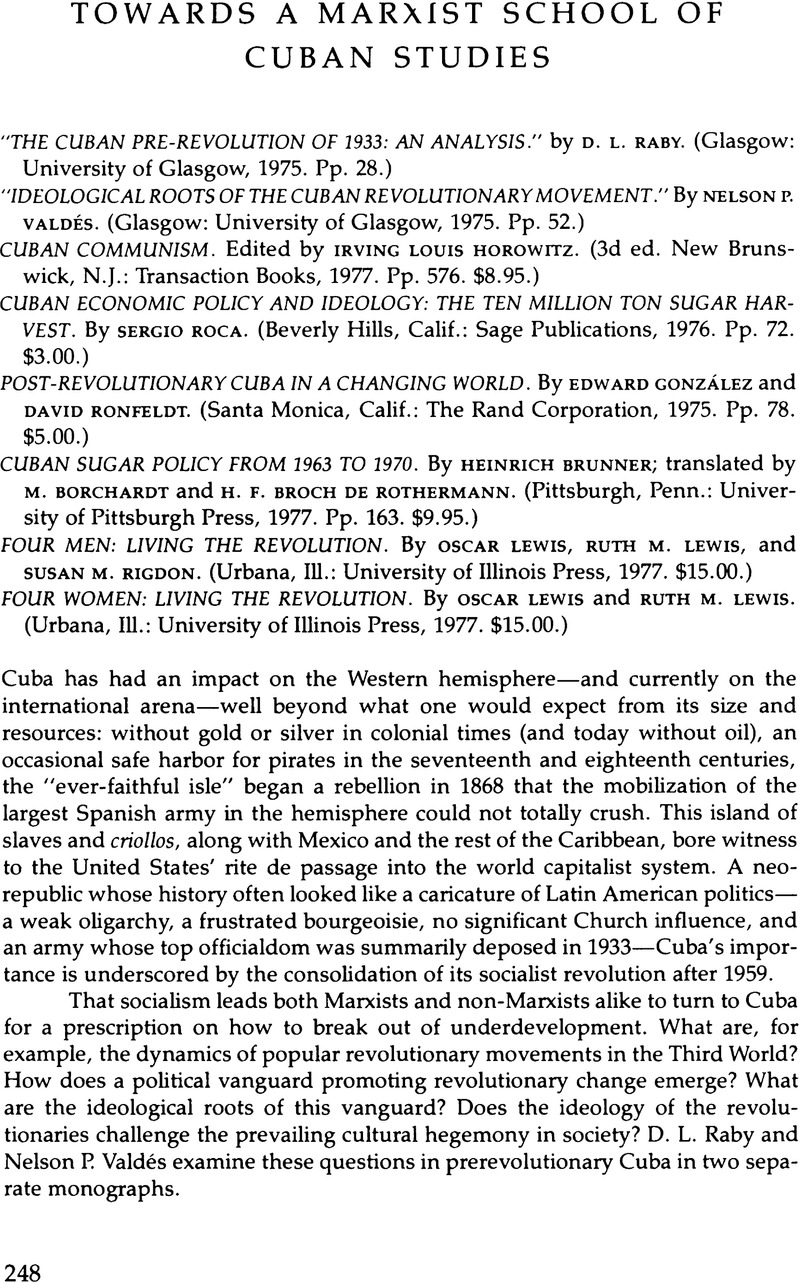No CrossRef data available.
Article contents
Towards a Marxist School of Cuban Studies
Review products
Published online by Cambridge University Press: 24 October 2022
Abstract

- Type
- Books in Review
- Information
- Copyright
- Copyright © 1980 by Latin American Research Review
References
Notes
1. Obviously, each of these traditions would require an exposition, one which Raby passes by in his paper.
2. For example, in his fine bibliography of the Cuban insurrection, Louis A. Pérez, Jr. does not include a separate entry for the Communist party; it is blatantly absent from an otherwise all-inclusive selection. See Louis A. Pérez, Jr., The Cuban Revolutionary War, 1953–1958: A Bibliography (Metuchen, N.J.: The Scarecrow Press, 1976).
3. It is an understatement to say that this is a controversial topic, but it is important to point to at least two sources that shed a different light on the pre-1959 Communists: Charles A. Page, “The Development of Organized Labor in Cuba” (Ph.D. dissertation, University of California, 1952) and Maurice Zeitlin, Revolutionary Politics and the Cuban Working Class (New York: Harper & Row, 1967).
4. See Granma, 22 June 1978, p. 1.
5. See, for example, James O'Connor, The Origins of Socialism in Cuba (Ithaca, N.Y.: Cornell University Press, 1970) and Juan and Verena Martínez-Alier, Cuba: economía y sociedad (Pairs: Ruedo Ibérico, 1972).
6. In less than two hours, Sara Gómez's film, De cierta manera (ICAIC, 1976), about the formerly marginal population, presents in a compassionate, critical, and revolutionary manner many of the problems Lewis points out in almost one thousand pages.


